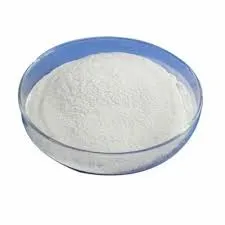
Dec . 12, 2024 10:28 Back to list
hydroxy methyl propyl cellulose
Hydroxy Methyl Propyl Cellulose An Overview
Hydroxy Methyl Propyl Cellulose (HMPC) is a versatile, non-ionic cellulose ether derived from natural cellulose, a polymer that is abundant and renewable. HMPC has garnered significant attention in various industrial applications due to its unique properties, including solubility in water, stability, and film-forming capabilities. This article will explore the chemical structure, properties, applications, and future prospects of HMPC in multiple domains.
Chemical Structure and Properties
HMPC is produced through a series of chemical modifications involving the hydroxymethylation and propylene glycol etherification of cellulose. The modifications introduce hydroxy and methyl groups into the cellulose chain, enhancing its solubility in both cold and hot water. The degree of substitution—measured as the number of substituents per anhydroglucose unit—can be tailored during the synthesis, allowing for customization of the properties of HMPC to meet specific application needs.
One of the primary attributes of HMPC is its viscosity. Depending on the concentration and degree of substitution, HMPC can exhibit different viscosities, making it a valuable additive for controlling the rheological properties of formulations. Additionally, HMPC has excellent thermal stability and does not undergo significant degradation at elevated temperatures, which is crucial for processes that involve heat, such as in the production of plastics or food.
Applications in Various Industries
1. Pharmaceuticals In the pharmaceutical industry, HMPC is widely used as a binder, thickener, and film-forming agent in tablet formulations. Its ability to form a gel in contact with water helps in controlling the release rate of active pharmaceutical ingredients (APIs), thereby optimizing drug delivery systems. HMPC is also used in ophthalmic solutions due to its non-toxicity and ability to maintain moisture.
2. Food Industry HMPC is recognized as a food additive, often labeled as E464. It serves various functions in food products, such as a thickener, stabilizer, and emulsifier. By improving texture and mouthfeel, HMPC enhances the sensory attributes of food products. Its gelling properties also benefit gluten-free formulations, making it an essential component in gluten-free baking.
hydroxy methyl propyl cellulose

3. Cosmetics and Personal Care In cosmetics, HMPC is utilized for its thickening and emulsifying properties. It is found in lotions, creams, and hair care products, where it enhances texture and stability. The film-forming characteristics of HMPC contribute to the durability of cosmetic applications, ensuring better adherence to surfaces.
4. Construction HMPC plays a crucial role in the construction industry, particularly in cement-based applications. It acts as a water-retaining agent, improving the workability of mortars and plasters, while preventing premature drying. This property ensures better adhesion and reduces cracking, thereby enhancing the durability of construction materials.
5. Paper and Textile Industries HMPC is also used in the paper industry as a coating agent, improving printability and providing a smooth surface. In textiles, it is employed as a sizing agent to enhance the strength and finish of fabrics.
Future Prospects
The demand for sustainable and eco-friendly materials has spurred interest in natural polymers like HMPC. As industries continue to seek alternatives to synthetic additives, the growth potential for HMPC is promising. Ongoing research is focused on enhancing its properties, exploring new applications, and improving production processes.
Moreover, advancements in technology may enable the development of more functional derivatives of HMPC, broadening its applicability in emerging sectors such as biodegradable materials and biopolymers. The potential for HMPC to contribute to sustainable practices aligns with global trends toward reducing plastic use and minimizing environmental impact.
Conclusion
Hydroxy Methyl Propyl Cellulose is a multifunctional compound that has found applications across diverse industries. Its unique properties make it an invaluable ingredient in pharmaceuticals, food, cosmetics, construction, and more. As the demand for natural, sustainable alternatives continues to grow, HMPC is poised to play a significant role in shaping future innovations. Its versatility, combined with a focus on environmentally friendly practices, will likely ensure its relevance in various applications for years to come.
-
Versatile Hpmc Uses in Different Industries
NewsJun.19,2025
-
Redispersible Powder's Role in Enhancing Durability of Construction Products
NewsJun.19,2025
-
Hydroxyethyl Cellulose Applications Driving Green Industrial Processes
NewsJun.19,2025
-
Exploring Different Redispersible Polymer Powder
NewsJun.19,2025
-
Choosing the Right Mortar Bonding Agent
NewsJun.19,2025
-
Applications and Significance of China Hpmc in Modern Industries
NewsJun.19,2025







